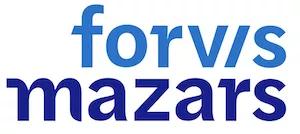- with readers working within the Accounting & Consultancy industries
In Nigeria, the mechanics of Value Added Tax (VAT) on goods is that the tax is charged at every stage of the supply chain, thereby creating the possibility of multiple incidences of VAT. To relieve the multiple incidences of VAT, the operational framework established in Section 14 to 17 of the VAT Act is that a taxpayer who has an obligation to collect VAT can deduct qualifying input VAT from the output VAT received. Ultimately, the net amount will be the VAT due and payable to the tax authorities. This principle suggests that where the output VAT is more than the qualifying input VAT, the taxpayer should remit the VAT payable.
On the other hand, the taxpayer is entitled to a VAT refund where the qualifying input VAT suffered is more than the output VAT received. While this principle is established, there have been concerns about what constitutes qualifying input VAT claims. Understanding this justifies the taxpayer's reason to lay claims to qualifying input VAT.
Against this backdrop, the Tax Appeal Tribunal (TAT), in the case of CHI Limited v. The Federal Inland Revenue Service (FIRS) resolved the controversies surrounding Section 17 of the VAT Act, which provides the basis for qualifying input VAT claims.
Background Of the Case
CHI Limited commenced an appeal before TAT following FIRS' refusal to grant the company's input VAT claims incurred on the purchase of gas, short-term spares and consumables against the output VAT charged on its final products. The company claimed that these items qualify as stock-in-trade according to the provisions of Section 17 of the VAT Act, and as such, VAT incurred on them should be recognised as part of its qualifying input VAT.
CHI Limited as appellant argued that the term "stock-in-trade" as used in Section 17 of the VAT Act was without any further definition and so cannot be construed strictly and restrictively to mean inventories alone. The company, relying on the dictionary definition, argued that the term's ordinary meaning is more exhaustive than inventories, as FIRS had suggested in its correspondence to the company. Citing the Black's Law dictionary, the appellant defined "Stock in trade" as:
- The inventory carried by a retail business for sale in the ordinary course of business.
- The tools and equipment owned and used by a person engaged in a trade.
- The equipment and other items needed to run a business.
Thus, the appellant argued that items such as gas, spares and consumables used in the direct production of its products qualify as stock-in-trade in the context of Section 17 of the VAT Act.
FIRS, as a respondent, argued that the items purported to be recovered by CHI do not qualify as raw materials for the direct production of its products. FIRS argued that the items form part of the company's overhead, which would ordinarily be expensed in its income statement; therefore, the company should not be allowed to claim input VAT
on such items. FIRS further rebutted that the dictionary could not be relied on to give the contextual meaning of "stock-in-trade" and further argued that the legislative intent of the term was to restrict same to inventories used in direct production. Thus, the input VAT recoverable are those suffered on raw materials used for the direct production of its final products.
TAT's Decision
The Tribunal ruled in favour of the appellant; CHI Limited that "stock-in-trade" could not be simplified to just raw materials and inventories. Since the VAT Act provides for "stock-in-trade, " the same must be construed in its ordinary sense. The TAT further cited that in the absence of a legislative definition of the term, the appellant was within reason to rely on dictionary definition as the dictionary provides a sympathetic and imaginative discovery of legislative intention.
Further, it was the opinion of the TAT that the phrase "direct production" does not necessarily mean direct production in the context of manufacturing. If this were so, the term "stock-in-trade" would have been replaced with raw materials. It is sufficient that a direct link can be established between the stock-in-trade and the company's final product. Accordingly, the TAT ruled in favour of CHI Limited upon establishing that the use of gas necessary to produce its final products was easily distinguishable from the gas used for administrative purposes.
Commentaries
What is without contention is that upon charging output tax, a taxpayer is entitled to deduct qualifying input VAT already suffered. Section 17 of the VAT Act determines the scope of qualifying input VAT as deduction against output VAT collected. It also clearly states the input VAT which will not be considered as offset against output VAT. For clarity, Section 17 is reproduced below:
- For purposes of section 13 (1) of the VAT Act, the input tax to be allowed as a deduction from output tax shall be limited to the tax on goods purchased or imported directly for resale and goods which form the stock-in-trade used for the direct production of any new product on which the output tax is charged.
- Input tax:
- on any overhead, service, and general administration of any business which otherwise can be expended through the income statement (profit and loss accounts); and
- on any capital item and asset which is to be capitalised along with cost of the capital item and asset, shall not be allowed as a deduction from output tax.
Without more, the following may be established:
- Taxpayers can offset input VAT on goods purchased or imported for resale against output VAT.
- Input VAT on goods which form part of stock-in-trade used for the direct production of a new product on which output VAT is charged may also be deducted against the output VAT.
- Input VAT on overhead, service and general administration of any business which can be expended through the income statement cannot be deducted against output VAT.
- Taxpayers cannot deduct input VAT on capital items and assets to be capitalised along with the cost of the item against output VAT.
Flowing from the above, it is distillable that "stock-in-trade used for the direct production" goes beyond the presumption of raw materials used in the direct production of final goods. The decision in CHI Limited further suggests that input VAT on overhead expenses which are not expended through income statements may be claimed as qualifying input VAT against output VAT collected on the final product. Be that as it may, a taxpayer who intends to claim such input VAT must prove the direct link of such overhead to the production of its final products.
Conclusion
The decision in CHI Limited v. FIRS is a sharp deviation from the traditional presumption exercised by the tax authorities that ALL input VAT suffered on overheads, stock-in-trade other than raw materials, and inventories are not recoverable as input VAT claims. This decision clarifies the legislative reach of Section 17 of the VAT Act. Companies in the manufacturing and related industries are positively affected by this decision.
The content of this article is intended to provide a general guide to the subject matter. Specialist advice should be sought about your specific circumstances.


